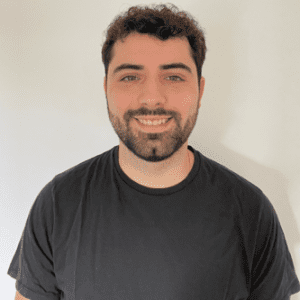Willuhn Group
Dopamine, compulsive & motivated behaviour

Dopamine, compulsive & motivated behaviour
The Neuromodulation & Behavior group is driven by the question: “What drives our behavior?”. Specifically, the group is interested in how our brain controls motivated behavior and under what circumstances our behavior occurs seemingly uncontrolled or maladapted. In this context, the scientific focus lies on how the release of the neurotransmitter dopamine (and other neuromodulators such as serotonin) regulates cortico-basal ganglia networks under normal (e.g., reward learning, decision making), as well as pathological conditions (e.g., obsessive-compulsive disorder (OCD) and other disorders that exhibit compulsive behavior). The group pursues these goals by collecting a range of neurobiological measurements in awake behaving rodents (using voltammetry, electrophysiology, and fluorescence imaging) and by probing neural mechanisms with optogenetic, chemogenetic, and pharmacological interventions, as well as high-frequency electrical deep-brain stimulation that can also be applied in humans.
The Willuhn group conducts its scientific research at the Netherlands Institute for Neuroscience (NIN) but is also embedded in the Psychiatry Department of the Amsterdam UMC and, therefore, has close ties with clinicians and clinical researchers, providing optimal conditions for a translational and multidisciplinary approach. Specifically, we aim to translate clinical findings from studies in humans into relevant animal models, and vice versa. To study behaviors relevant for psychiatric disorders, with a focus on compulsive and impulsive behavior, the group employs a variety of cutting-edge methods for in-vivo brain recordings and manipulations in rodent models (both rats and mice). Such recordings and manipulations are carried out while rodents perform in sophisticated, custom-designed behavioral paradigms that enable translation to human subjects.
Furthermore, the team investigates the therapeutic brain mechanisms of deep-brain stimulation, an innovative therapeutic approach in psychiatry, and is interested in studying the brain mechanisms of other neuromodulatory treatments used in psychiatry (e.g., transcranial magnetic stimulation, ultrasonic stimulation). The long-term goal is that these approaches will identify the neural circuits underlying specific psychiatric symptoms and offer new, highly targeted pathways for therapy in psychiatric patients.
Compulsivity and impulsivity are endophenotypes that are implicated in dysfunctional behavior central to multiple psychiatric disorders, such as OCD, substance and behavioral addictions, hoarding, eating disorders, or skin picking. Furthermore, the Willuhn lab is interested in mechanisms through which actions become automatic (i.e., habit formation) and how the brain shapes motivation and action in response to rewarding and aversive stimuli, thereby guiding both appetitive and avoidance behavior. The Willuhn group approaches its psychiatric research in rodents from different angles. On one hand, genetic manipulations of genes known to be strongly involved in psychiatric disorders are utilized to create mouse models. On the other hand, behavioral conditioning is utilized to induce behaviors of interest gradually (and non-genetically) and monitor their development.
Keywords: Dopamine, Serotonin, Basal ganglia, Striatum, Prefrontal cortex, Obsessive-compulsive disorder, Compulsivity, Impulsivity, Habit formation, Motivation, Reinforcement learning, Decision making, Deep-brain stimulation (DBS), Transcranial magnetic stimulation (TMS).
A drug addict and an OCD (obsessive compulsive disorder) patient are similar. How is that?
‘Their compulsive behaviour is the end point of an escalation that starts with doing something because you want to, then it becomes a habit – automaticity – and then in some people it becomes pathological. Both the addict and the compulsive patient lose control over their behaviour. Both feel bad about it, they know they should stop, and yet they cannot. This is when the basal ganglia (BG) come into play. ‘In our lab, we study the BG in rodents. The BG is a series of brain nuclei that is the same in all mammals; therefore, our findings in rats and mice are also relevant for humans. They do not play a role in the minutiae of our actions (for example, how many centimetres we lift our arm), but they do play a role in our general actions, and how we do them: with what intensity or force. I think people get stuck in certain behaviour and lose their flexibility to change it, because this brain area has become dysfunctional.’
What processes are involved?
‘For this we need to look at the striatum, the entrance to the BG. Striatal cells normally contain many D2 receptors that can transmit signals from the neurotransmitter dopamine. These signals have an inhibitory effect. But if there are only a few D2 receptors, the inhibition works poorly and people become more impulsive. This can lead to giving drug-taking a go – and then not being able to control your use. The number of D2 receptors in the striatum is one of the best predictors of compulsive drug use.
If this is a biological mechanism, could it be solved by means of a biological intervention?
‘Using medication to manipulate the amount of dopamine in the brain does not help. This is probably because drugs end up all over the brain and therefore also cause effects in areas where you don’t want them. ‘Deep Brain Stimulation (DBS) does work. By means of two electrodes implanted in the brain, it is possible to manipulate the activity in those areas by means of electrical impulses.’
What is the effect of that?
‘In healthy people, different parts of the brain enter into a ‘discussion’ about what would be the correct decision: they behave differently. In OCD patients, the activity of the cortex and the BG are very similar. The more rigidly they operate together, the more severe the compulsive symptoms of OCD patients are. ‘DBS can separate the activity of these two areas, as it were, so that they can do more of their own thing. This can significantly reduce the symptoms of OCD patients. To understand how this works, we are conducting fundamental research into how these brain areas shape behaviour.’
How do you measure this brain activity?
‘We usually use electrochemical and electrophysiological techniques, but these measurements are affected by the electrical noise emitted by the DBS electrodes. Recently, we have been trying out a technique that renders the calcium in cells fluorescent when they become active. Calcium fluorescence is not affected by electrical noise. We can now measure right next to a DBS electrode, and see what happens to the neurons around it and in adjacent areas. Very exciting!’

Postdoc
See profile
PhD student
See profile
Postdoc
See profile
PhD student
See profile
PhD student
See profile
PhD student
See profile
Technician
See profile
Technician
See profile
Technician
See profile
postdoc
See profile
Postdoc
See profile
postdoc
See profile
Student
See profile
PhD student
See profile
Head of department
See profile
PhD student
See profile
"*" indicates required fields
"*" indicates required fields
You can also transfer your contribution to NL76 INGB 0002 1673 78 in the name of ‘Stichting Vrienden van het Herseninstituut’
The Friends Foundation facilitates groundbreaking brain research. You can help us with that.
Support our work